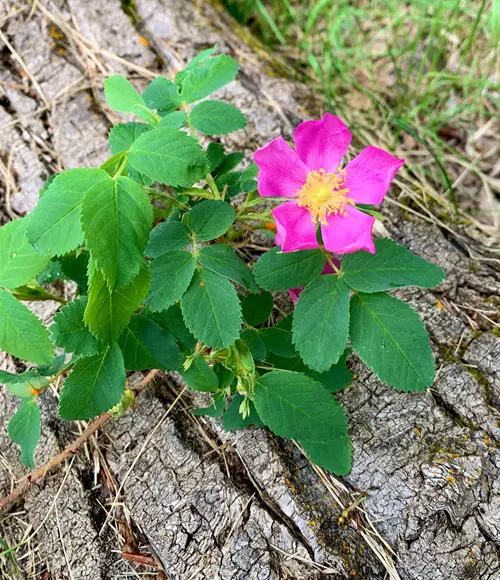Wouldn’t these sweet-scented blooms be a tad better without their menacing thorns? We share tricks for growing thornless and less prickly roses!
There’s nothing more discomforting than scratching or pricking yourself in dry weather with scraggly thorn-filled rose bushes. But they are so pretty—if only they were as manageable! They can be, with our tricks to growing less prickly and thorn-free roses in your garden. Read on to find out!
Thorns, Spines, or Prickles?
Before we get to tricks and hacks, let’s take a look at what these thorns are that pain us so. Roses technically have “prickles” and not “thorns.” They have epidermal cells, like skin in humans, that modify and extend outwards, which are known as prickles.
Thorns are modified branches, while spines are transformed leaf structures. All three help protect the plant and help keep away predators, but their differences matter. Unlike thorns and spines, prickles are relatively easier to remove because they lack vascular material.
Prickles are largely present to enable certain rose varieties to hang on to other vegetation or deter herbivores and pests from climbing up their stems. Now that we know these are easier to deal with let’s move on to our tricks for thornless and less prickly roses!
Tricks to Grow Thornless and Less Prickly Roses
1. Choose the Right Variety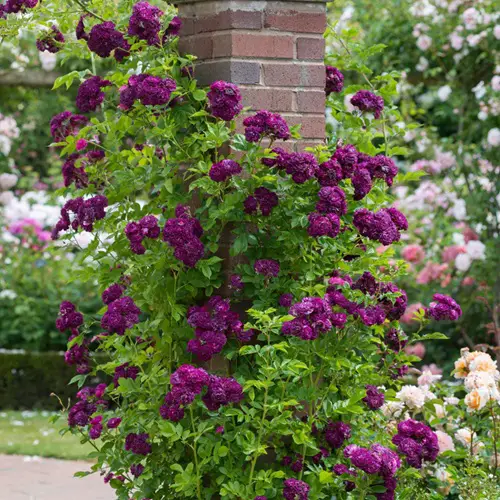
Roses have hundreds of varieties, some of which are genetically modified to produce fewer thorns, while some are naturally less prickly. Especially in busy areas, such as pathways, or in spaces with children and pets, it serves to grow roses with fewer thorns.
Climbing rose varieties like Climbing Iceberg, or even certain English shrub cultivars, are good prick-free options to train over fences and trellises. Polyanthas are hardy picks but can be invasive. Modified roses like Bleu Magenta with its mauve petals, pastel pink-hued Chloris, sunny Goldfinch, and other miniature and hybrid tea varieties are also excellent picks, depending on the look you’re going for!
Starting with a less prickly variety will nip the problem in the bud and is the first important step to having a thornless and safe garden.
2. Prune Old and New Growth
Roses have woody stems that mature and produce bigger and tougher prickles. Pruning away old growth helps produce fresh, softer sprouts where the thorns are less menacing. However, some heirloom and old rose varieties bloom better on woody stems, while modern ones, like hybrid teas, miniatures, floribundas, and rambling roses, produce flowers on fresh growth.
With old wood varieties, prune immediately after flowering, while with the new ones, you can prune them lightly throughout the growing season till late summer or early fall but majorly cut them back to about a third of their size in late winter (if you live in a frost free zone) or early spring (the most ideal time), just before fresh growth.
Growing roses that bloom on new wood and trimming away woody bits encourages new canes with fewer prickles. This is why this step is most important!
So, going back to our first point, remember to choose the new wood rose variety for your home if you want thorn-free rose bushes. For more, check out our detailed guide on pruning roses like the masters.
3. Keep them Stress-Free 
These stunning, sweet-scented blooms have no business being stressed in a safe space like your home garden! Do all you can to keep them trauma-free because when they lash out, it’s prickly painful!
If they constantly face hostility, it triggers their defense mechanism, and they produce way more thorns to safeguard themselves. Stressed roses can develop conditions like rose rosette disease, often leading to excessive prickles.
Drought-like situations coax them into developing thorns to conserve water and nutrients. Annoying intrusions by pests like aphids, spider mites, and grazers also prompt them into building their thorny wall of defense!
4. Sun & Solitude
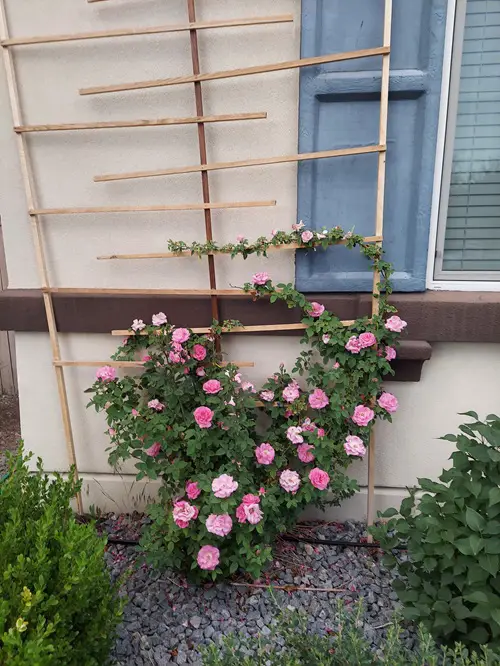
Did you know that placing the rose pot in a specific location can significantly reduce its thorns? Yes! Growing roses in areas with less foot traffic and disturbance will keep the plant at peace and, therefore, won’t nudge its defense mechanism. Give them full sunlight and well-draining soil, and then leave them be except for regular care and watering.
Train your climbing roses horizontally to coax more blooms versus thorns along the length of its cane. Keep your heirloom and hybrid tea roses accessible so you can care for them without traversing through their thorns, but place them amongst other hardy vegetation that doesn’t need constant visiting and scrutiny.
5. Wrong Soil pH

Roses thrive at a pH of about 6.5, which is on the slightly acidic side of neutral. They may tolerate minor shifts above or below their ideal pH, but anything drastic will cause stress, reduce their ability to fight off diseases and pests and trigger a thorn burst.
Incorrect pH in the soil will deter roses from efficiently absorbing the nutrients they need from the soil. If your soil is too acidic, try using wood ash, dolomite, or limestone to increase the soil pH. And for extra alkaline medium, adding organic compost helps.
6. Nitrogen Overload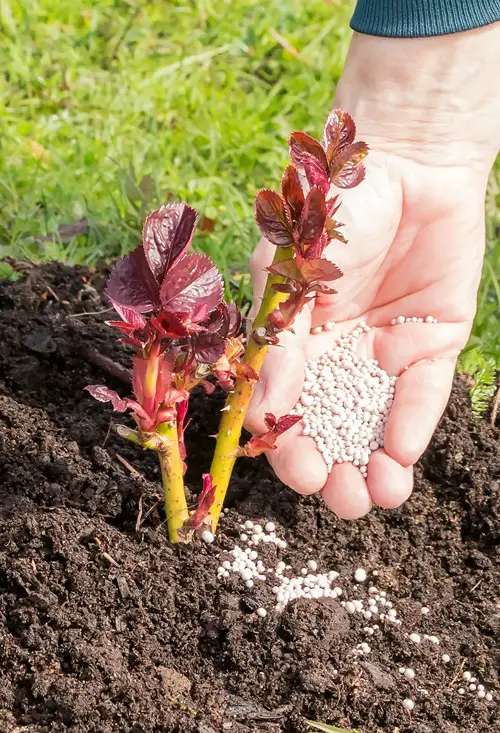
This brings us straight to the issue of essential soil nutrients and nitrogen. Ensure that the potting mix or soil is rich in nutrients required for blooms and not thorns. A nitrogen-rich fertilizer that lacks potassium and phosphorous may lead to vigorous but thorny growth.
Typically, a fertilizer with 10-10-10 NPK works if your soil pH is above 6.5. However, if you find too many thorns, go for low nitrogen formulas like 5-10-10 or 5-10-5 or use bone meal that contains phosphorous, Epsom salt to boost chlorophyll production and blooms, fish emulsion, and compost.
7. Rootstock & Grafting Techniques 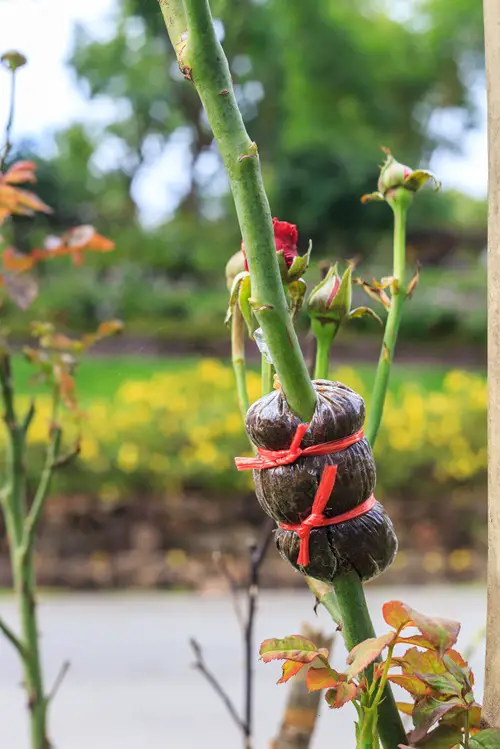
Our final trick to growing thornless and less prickly roses is rootstock and grafting. A rootstock is a plant part—often its root system and lower stem—onto which the upper part of another plant (scion) is grafted. This fuses desirable traits from both varieties into one.
So, rosarians often pick rootstocks that produce fewer prickles and are quite hardy, such as multiflora roses, and graft them with hybrid tea roses, floribundas, miniatures, polyanthas, and climbing types, all of which have precious blooms!
This gives you the best of both worlds: resilient, prick-free, mesmerizing roses in myriad hues and scents!
Alongside these tricks and clues to getting your roses to bloom amidst fewer thorns, remember to mulch and water correctly, avoid over-pruning, and basically give your roses a safe, relaxed home to grow in. Let us know via comments how this worked for you!



